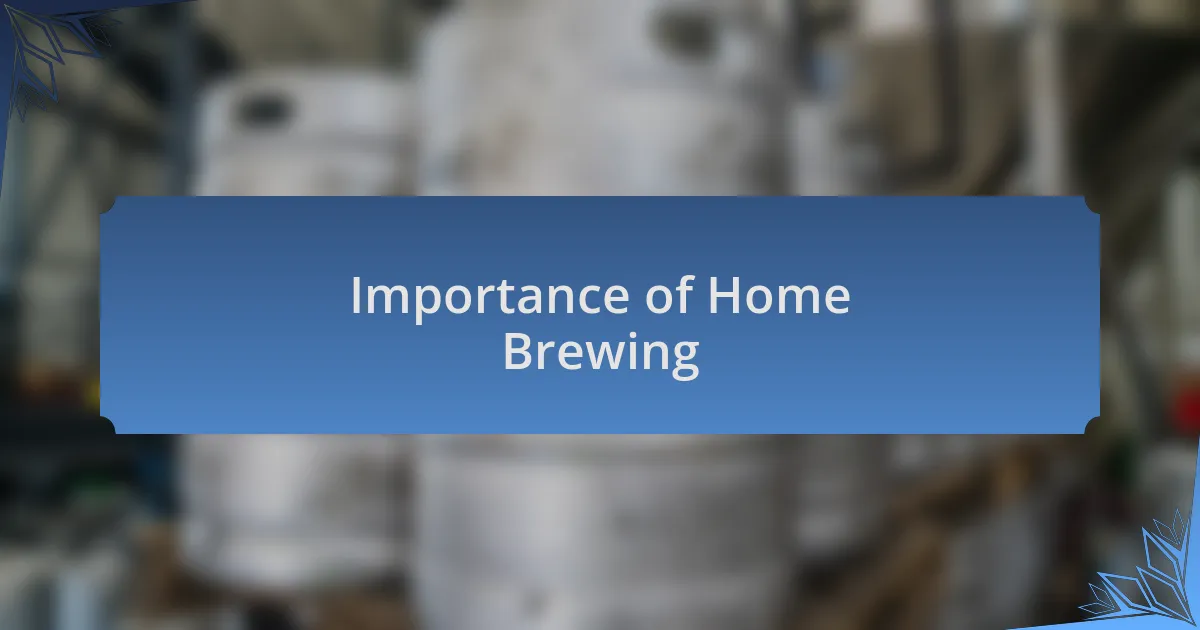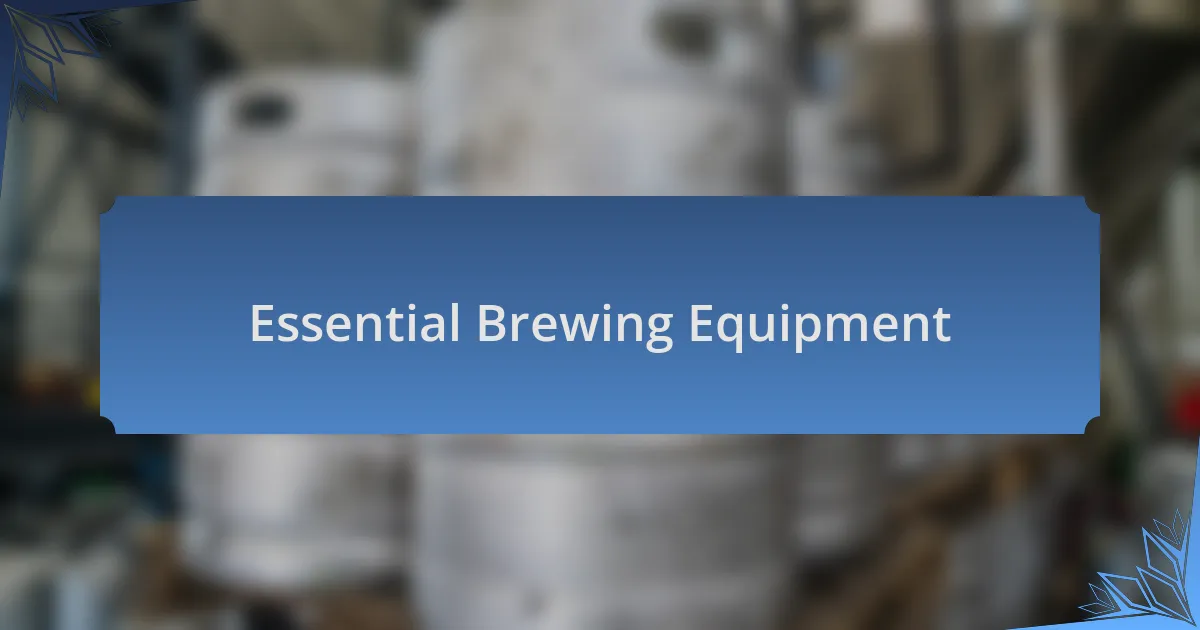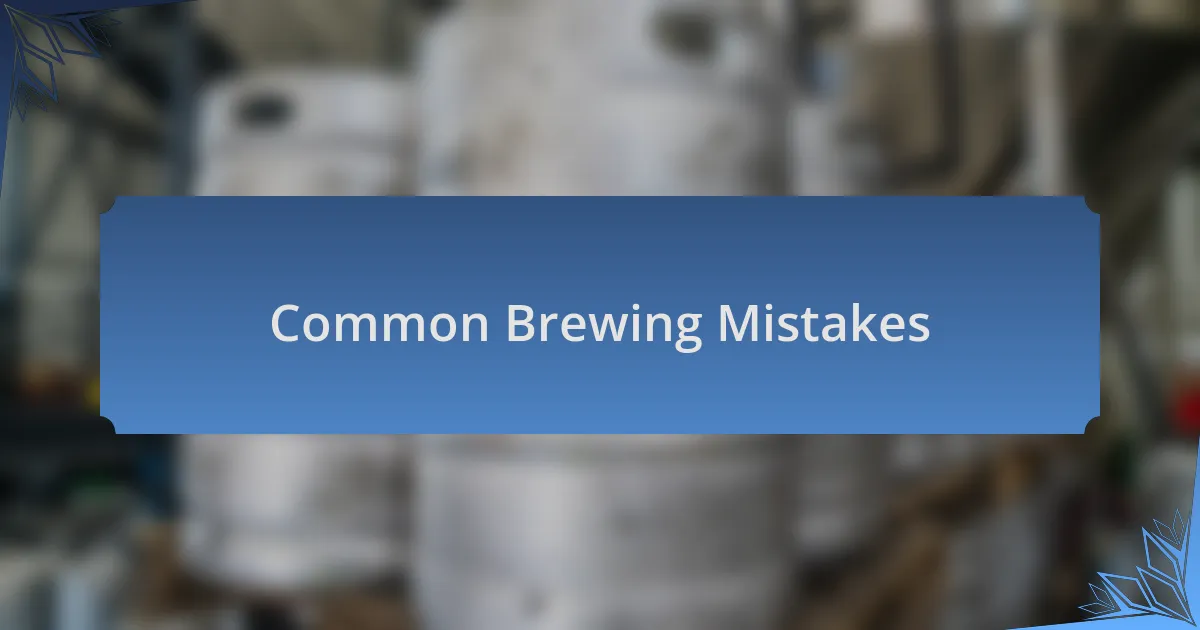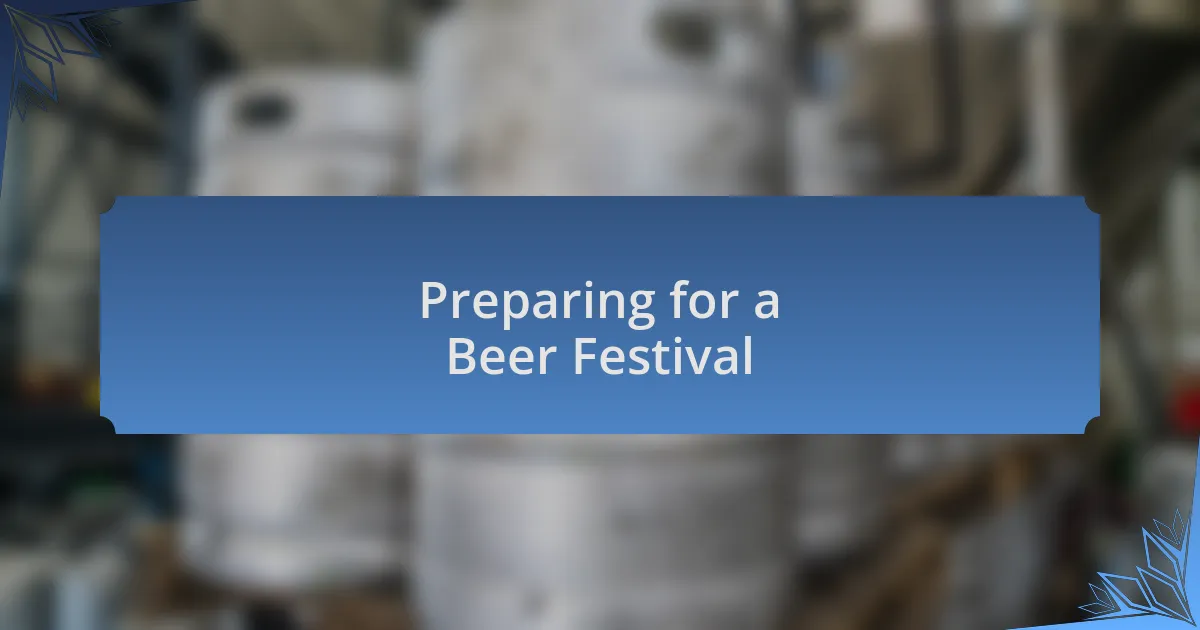Key takeaways:
- Craft beer festivals celebrate local breweries and foster community connections through shared experiences and unique brews.
- Home brewing allows enthusiasts to experiment with flavors and ingredients, developing a deeper appreciation for craft beer.
- Understanding different beer styles is essential for brewers to enhance their creations and appreciate the diversity of flavors.
- Proper sanitation, temperature control, and ingredient quality are critical for brewing quality beer and avoiding common mistakes.

Overview of Craft Beer Festivals
Craft beer festivals are vibrant celebrations of creativity and craftsmanship, showcasing the diverse offerings from local breweries. I remember my first festival; it felt like stepping into a world where passion and innovation blended in every pint. Can you imagine the buzz in the air as artisans share their stories, and the aromas of unique brews entice you to explore?
These events often feature a remarkable variety of styles, from IPAs bursting with hops to rich stouts that warm your soul. At one festival, I found myself captivated by a small brewery’s playful take on a traditional lager—it was a game-changer that opened my eyes to the endless possibilities in brewing. Isn’t it fascinating how each brew has its own tale to tell?
Moreover, craft beer festivals serve as gathering points for community and culture, bringing together not just brewers, but also enthusiasts eager to share their experiences. It’s a bit like a reunion of beer-loving friends, even if you’ve just met over a tasting table. Have you ever felt that camaraderie while sipping craft beer? That shared appreciation creates connections you wouldn’t expect!

Importance of Home Brewing
Home brewing is a pivotal practice that allows beer enthusiasts to dive deeper into the world of craft beer. I recall the thrill of my first brew day; the kitchen turned into a makeshift brewery, filled with the earthy aroma of grains and hops. Isn’t there something special about knowing exactly what’s in your beer, tailored to your taste?
Beyond just personal enjoyment, home brewing fosters a sense of community among fellow enthusiasts. Sharing brews with friends has led to more than a few memorable gatherings, where we exchange tips or indulge in tasting challenges. It’s incredible how brewing can spark conversations that last for hours, don’t you think?
Additionally, home brewing serves as a creative outlet, where experimentation is encouraged. I’ve tried everything from adding spices to crafting unique fruit-infused ales, and each attempt brought unexpected lessons and delightful surprises. What better way to explore your palate than to create your own signature brew?

Understanding Beer Styles
Craft beer comes in an incredible array of styles, each offering distinct flavors and experiences. When I first started learning about these styles, I was amazed at how a simple change in ingredients or brewing techniques could yield such varied results. Have you ever tried a stout and been blown away by its richness, only to be surprised by the crispness of a lager? It’s like exploring a whole new world.
Understanding the basics of beer styles, such as ales versus lagers, is essential for any brewing enthusiast. Ales, fermented at warmer temperatures, often develop fruity and complex flavors that can be incredibly satisfying, while lagers, fermented cooler, present a clean and refreshing profile. I remember brewing my first pale ale and being fascinated by how the hops transformed the beer, imparting a floral aroma that was intoxicating. Have you found a style that resonates with your tastes?
As you delve deeper into the brewing process, learning to appreciate the nuances of beer styles can elevate your home brewing experience. For instance, experimenting with different hop varieties can lead to unexpected flavor profiles in your brews. The joy of creating a beer that captures the essence of a specific style, like a tropical IPA bursting with fruity notes, is something every brewer should strive for. So, what style will you explore next?

Essential Brewing Equipment
When it comes to brewing beer at home, having the right equipment is crucial for success. I vividly remember my first brewing day; the excitement was palpable, but I quickly realized I was missing a reliable fermentation vessel. A good fermenter not only helps manage temperature but also keeps your beer safe from unwanted contaminants, which is essential for achieving that perfect brew.
One of the most essential pieces of equipment I recommend is a high-quality brew kettle. I invested in a 5-gallon stainless steel kettle that has served me well over the years. The even heat distribution helps with proper boiling and can make a noticeable difference in the final product. Have you ever noticed a slight off-flavor in your beer? It could stem from an uneven boil, which a proper kettle can help prevent.
Don’t overlook the significance of tools like hydrometers and brewing thermometers, either. On my brewing journey, I’ve found these tools invaluable for tracking fermentation progress and ensuring the right temperatures for mashing and boiling. Getting your readings can feel like deciphering a secret code, but when you nail that gravity reading just right, it’s a thrill that reinforces your confidence in the process. What tools have you found indispensable in your brewing adventure?

Tips for Brewing Quality Beer
Pay close attention to your ingredient quality when brewing beer; it’s something I’ve learned through a few not-so-great batches. The grains and hops you choose can significantly impact the flavor profile of your beer. I once made the mistake of using stale hops, and the resulting beer tasted flat and lacked depth. Have you ever had a beer seem off, and later discovered it was the ingredients at fault? Fresh, high-quality ingredients are the baseline for any quality brew.
Temperature control is another critical aspect I can’t stress enough. I remember a time when I was brewing a stout and neglected the fermentation temperature. The result? A beer that was overly sweet and not enjoyable. Learning how to maintain consistent temperatures during fermentation has been a game changer for me. When you find that sweet spot, it can elevate your beer from good to exceptional. What strategies have you developed to keep your fermentation temperatures in check?
Lastly, it’s essential to maintain proper sanitation throughout the brewing process. I recall my early days of brewing when I thought rinsing was good enough; unfortunately, I learned the hard way the importance of thorough cleaning. Off-flavors or infections can ruin a perfectly good batch. So, after you’ve put all that effort into brewing, why risk it with subpar cleaning practices? Prioritize sanitation, and you’ll notice a marked improvement in your brewing outcomes.

Common Brewing Mistakes
One common brewing mistake that I’ve stumbled over is rushing the fermentation process. Early in my brewing journey, I was impatient after just a week and bottled my beer, eager to taste my creation. Instead of the satisfying carbonation and flavor I hoped for, I ended up with bottles that exploded from too much pressure—definitely not the surprise I was aiming for. Have you ever been so excited about a brew that you overlooked the necessary time it needed?
Another critical misstep is neglecting to take gravity readings. When I first brewed a pale ale, I skipped this step, thinking it was unnecessary. Unfortunately, I had no idea how much sugar had fermented, leading to a beer that was far too strong and unbalanced. Understanding how gravity affects your beer can save you from unexpected outcomes and help perfect your craft. Doesn’t it just make sense to have a clear picture of where your beer stands?
Finally, I’ve learned that overlooking the importance of proper yeast management can be a real game changer. There was a time when I thought that adding yeast was as simple as tossing it in and hoping for the best. I realized later that not rehydrating my dry yeast properly created sluggish fermentation. This small detail, learned the hard way, can mean the difference between a vibrant brew and a bland one. How do you ensure your yeast is at its best before pitching?

Preparing for a Beer Festival
When it comes to preparing for a beer festival, my first tip is to have a solid plan in place for what you’ll be bringing. During my first festival experience, I didn’t anticipate the sheer volume of people and ended up running out of my favorite batch midway through. Imagine the disappointment! I now make it a point to brew extra—always expect an enthusiastic crowd, and prepare for it.
It’s also crucial to think about your equipment. I vividly recall the chaos of a festival where my keg system malfunctioned just hours before opening. The panic was real, and I learned that packing spare parts—like connectors and hoses—can save the day. How often do you consider the technical side of your setup before an event? Planning for these hiccups in advance can keep the focus on enjoying the festival and sharing your creations.
Lastly, don’t underestimate the power of storytelling. I’ve found that engaging with festival-goers about the inspiration behind my brews has significantly deepened their appreciation for my work. When I shared the tale of my first brewing disaster, it sparked real conversations. What stories do you have that could connect with your audience? Remember, beer is about enjoyment, and sharing experiences can enhance that communal spirit in a way that few other things can.